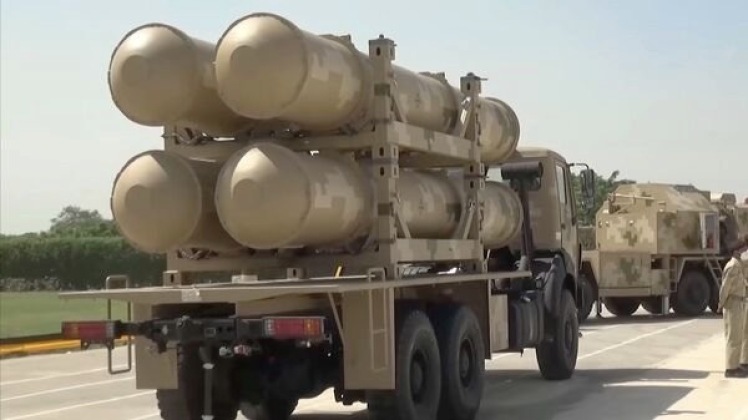The media wing of the Pakistani military Inter Services Public Relations (ISPR) reported that the Pakistan Army’s Air Defence Forces have inducted into service a variant of the Chinese-made HQ-9 Long-range Surface-to-air Missile (SAM) system. Referred to in Pakistan Army service as the HQ-9/P High-to-Medium Air Defence System (HIMADS) entered service in a ceremony held that same day at Army Air Defence Centre Karachi that was also attended by Pakistan’s Chief of Army Staff (COAS) General Qamar Javed Bajwa. The HQ-9/P can operate as part of an integrated air and missile defence network, meaning that it will be used to “significantly enhance” the ‘Comprehensive Layered Integrated Air Defence (CLIAD)’ along Pakistan’s frontiers.
Having successfully procured nine HQ-16-based LY-80 medium-range (MR) surface-to-air missile (SAM) systems from China. During early 2015, Pakistan became the first country to start negotiations on the import of the HQ-9 and HQ-16 with China. In December 2018, it was reported in few media circles that Pakistan is now studying the feasibility of procuring three or four FD-2000 SAM systems to fulfill its long-range air defence requirements. China an assuredly willing supplier of such systems to Pakistan, but Pakistan also has experience operating integrated air defence systems of Chinese origin – i.e., the LY-80 and, in the future, the LY-80N via the Type 054A frigate.

The HQ-9 (Hong Qi-9; Red Banner-9) is a medium- to long-range, active radar homing surface-to-air missile. Similar in capability to the Russian S-300 and American Patriot systems, the HQ-9 uses a HT-233 PESA radar system. The naval variant, HHQ-9 (H?i Hóng Qí-9; Sea Red Banner-9), appears to be identical to the land-based variant. HHQ-9 is equipped in the PLAN Type 052C Lanzhou class destroyer in VLS launch tubes. The HQ-9 system has an anti-radiation variant, known as the FT-2000 for export. The export designation for air defense version is FD-2000, and its developer China Precision Machinery Import-Export Corporation (CPMIEC).
Similar to the Russian S-300V, the HQ-9 is a two-stage missile. The first stage has a diameter of 700 mm and the 2nd stage 560 mm, with a total mass of almost 2 tons and a length of 6.8m. The missile is armed with a 180 kg warhead, has a maximum speed of Mach 4 and has a maximum range of 200 km. The thrust vector control (TVC) of HQ-9 is the most obvious visual identification that distinguish it from S300V: TVC of HQ-9 is exposed and thus can be observed from the side, while TVC of S300V is not exposed. The HQ-9’s guidance system is composed of inertial guidance plus mid-course uplink and active radar terminal guidance systems. Due to Russian assistance and technology transfers, a transporter erector launcher with missiles inside a cylindrical container.

